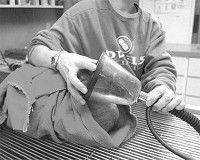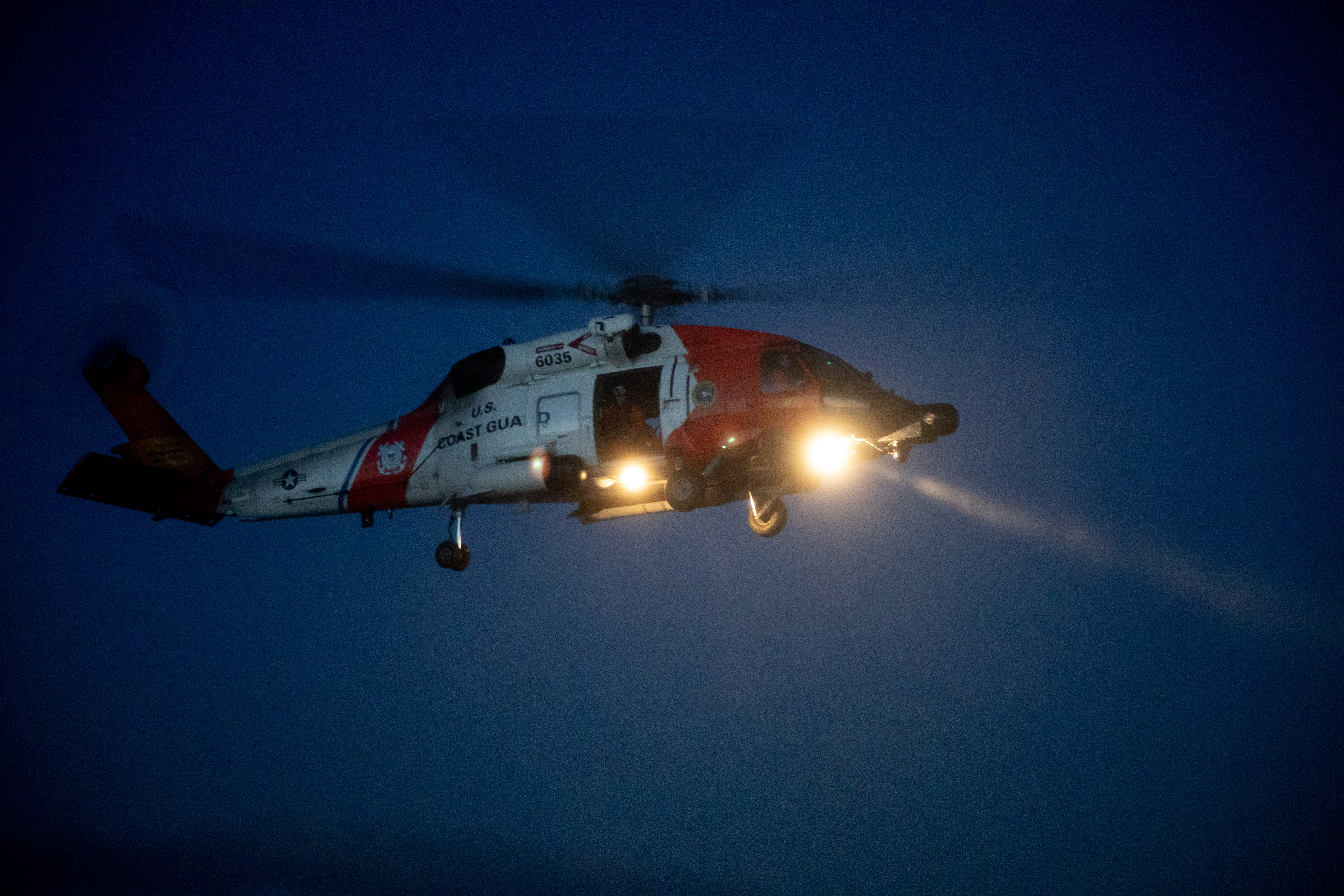Variety keeps life interesting for Peninsula veterinarians
Published 4:00 pm Tuesday, November 8, 2005

- A goose receives anesthesia before an operation to amputate his wing, which was mangled by wild animals.
SEAVIEW – From the routine to the life threatening, the doctors and staff at the Oceanside Animal Hospital never know what type of problem is going to come through the door. But that is part of what makes the job interesting.
Trending
Unlike human medical doctors, the crew at the clinic has to know about a variety of species, not just one. It might be a cat, dog, ferret, snake, bird or barnyard animal that needs help, and as anyone who has ever had an animal knows, each has their own unique personalities. But not only do they treat the sick and injured animals, they also comfort, console, and advise the people who care for them.
On a typical day, Dr. Ed Ketel starts with neutering a male dog from the South Pacific County Humane Society.
“They do a great job,” he said of the society. Although he has done this surgery for the society many times, “lots, too many,” it’s better than the alternative, too many unwanted cats and dogs. He’s happy to do the procedure, helping to prevent unwanted animals.
Trending
Meanwhile, Dr. Catherine Lindblad sees to other patients.
This day, there is a string of animals with allergies, the Peninsula itch. Lindblad estimates that half the dogs and a quarter of the cats here will come down with the condition.
“It’s pretty rosy, he has a few hot spots,” she tells one dog owner after examining the dog’s stomach and giving an allergy shot. The condition is made worse by fleas, and she recommends to another dog owner that they treat the yard, starting from the house foundation out. It is an ongoing battle, and Lindblad hopes for a good frost, which will help to reduce the flea population.
Ashlee Hughes brings in her dog Shoobie, a small black curly furred engaging poodle mix, for a health check. They will be traveling across states and he needs a health certificate certifying he has had all his vaccinations. When Shoobie travels, he likes to hang his front leg out the window, perhaps naturally striving for that cool look. For Hughes, Shoobie is one of the family, well lived and cared for. He is given a clean bill of health and is quickly on his way.
In the back, just behind the examining rooms, Ketel works on a beagle with a broken leg. The beagle had broken its leg badly several weeks before, and Ketel had carefully pieced the bone back together, one of his specialties. But the pin holding the bone in place had slipped, causing the dog pain and making him limp.
Heather Bootereaugh, the veterinarian technician, assisted during the surgery while Ketel shortened the pin. Fat deposits had built up around the pin, the body’s natural response to aid in healing and help reduce the irritation.
He directs her to lift the leg, adjusting it so he can get to the pin through the incision in the leg.
“Up, down,” he directed as Bootereaugh moved the leg so he could feel the pin’s position, then trim it. “This is a make or break thing,” he explains. A doctor can tell a person not to run around or put weight on a badly broken leg, but a dog will not understand. They might make the injury worse by running around. For this reason, Ketel sometimes is hesitant about giving some animals pain pills. Pain is the body’s way, both for animals and people, of saying “don’t do that.”
Up front, the regular appointments keep coming in. Donna Bard, who also works as a technician, answers phones, directs clients, and helps out in the back. Not counting the emergencies, this day the clinic has more than 30 appointments.
Lindblad brings a small dog back for a doggie manicure, a nail clipping. Bootereaugh helps hold him while petting and reassuring him the whole while. “Sometimes it helps to tickle up their heads,” said Lindblad. It’s all about bed, or in this case, table side manner.
Just as things begin to slow down for the lunchtime, an emergency comes in. The Rottweiller mix has somehow hurt his back leg, which is now swollen and dangles at an odd angle. The dog had been playing in the yard when suddenly he yelped. Apparently, in one of those freak accidents, he twisted it the wrong way and it broke.
“It’s just shattered,” said Ketel. They will hold the dog overnight, waiting for the swelling to go down, before doing surgery to piece the leg back together, much like a jig-saw puzzle. Then all they can do is let nature take its course.
Next, Ketel has to perform two surgeries he hates, amputations.
One is on a kitten that has an infected tail. All the skin has rotten off, it would never grow back. The tail would have to be removed.
Originally from the Humane Society, the kitten was a candidate for the Bear fund, a fund that provides money to pay for medical treatment for animals that are orphaned or disadvantaged.
Next, a pet goose that had been attacked by either dogs or coyotes had a mangled wing. It too could not be saved. But the goose could. A short while latter, minus one wing, the goose was up and around.
Although closing time had come, their work was not yet done. The clinic was “on call” that night, responsible for answering any emergency. One more happened. A pregnant dog came in. She was in shock, in danger of loosing her puppies. An emergency cesarean section was performed, and she delivered an amazing 10 puppies. Ketel and Lindblad where there until 2 a.m., rubbing the small pups, making sure the mother was fine. The mother lost half her weight. All survived and are doing well.
“A happy ending,” said Lindblad.
To contribute to the Bear fund or buy a $10 raffle ticket to win a computer, contact the Oceanside Animal Hospital at 642-2232.









